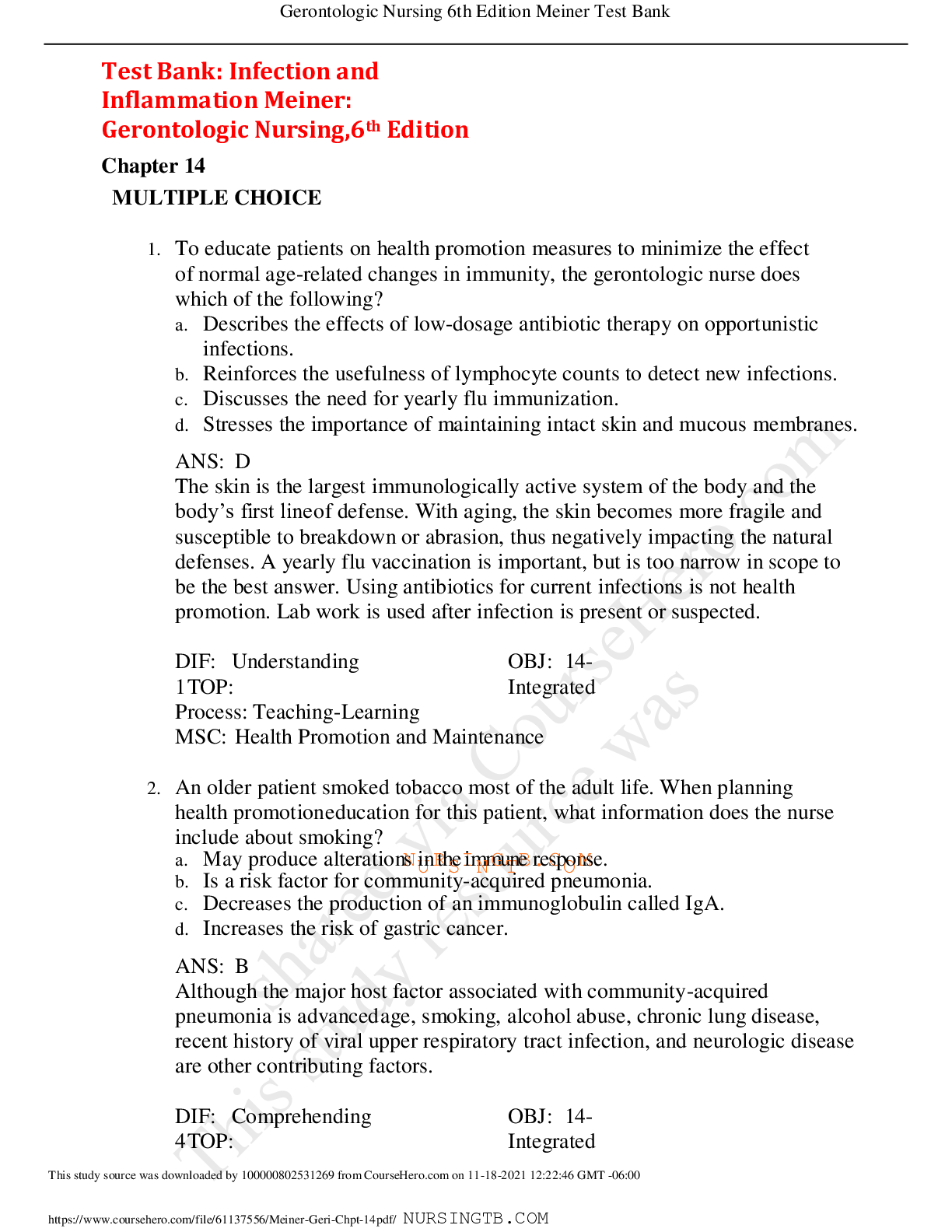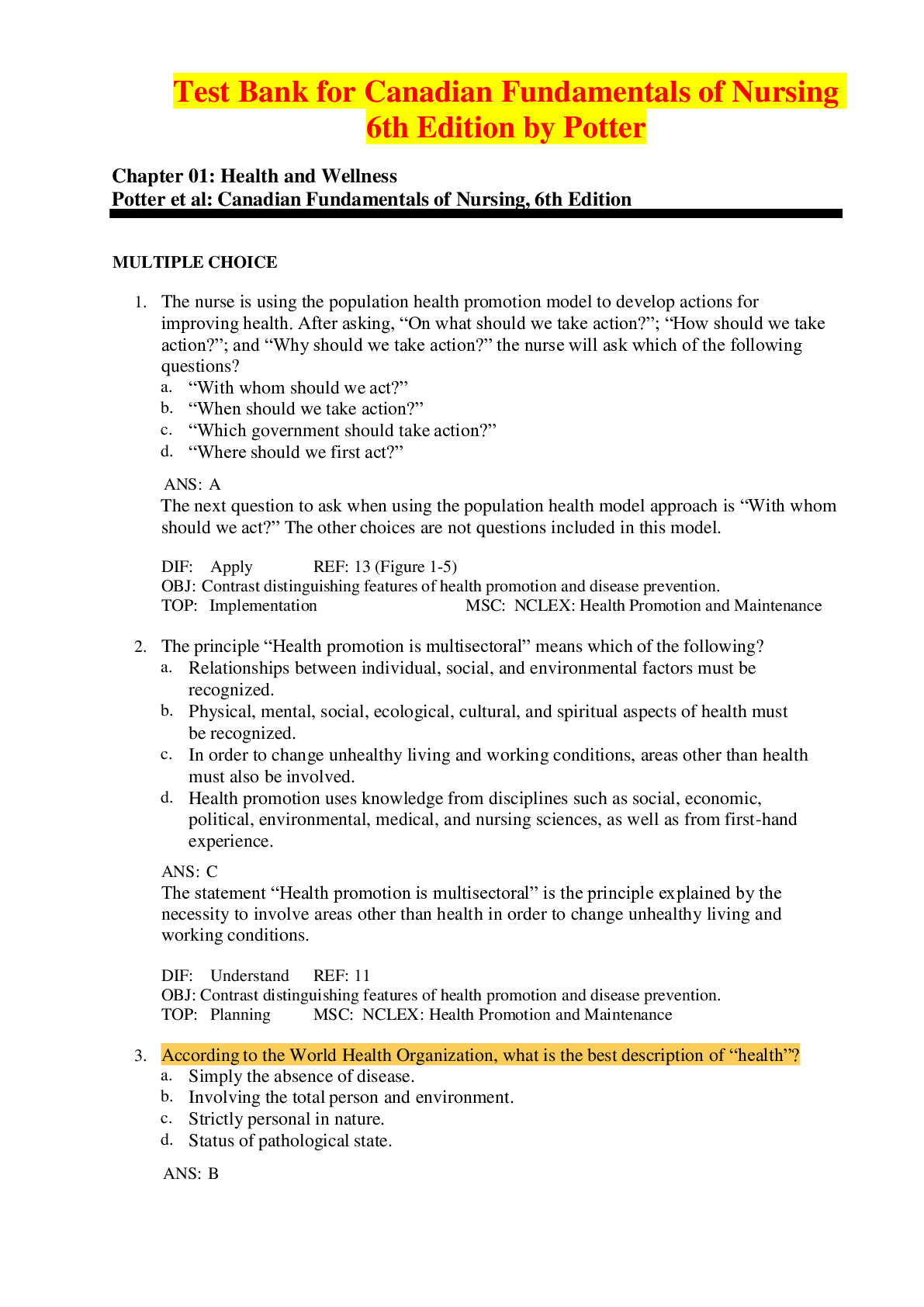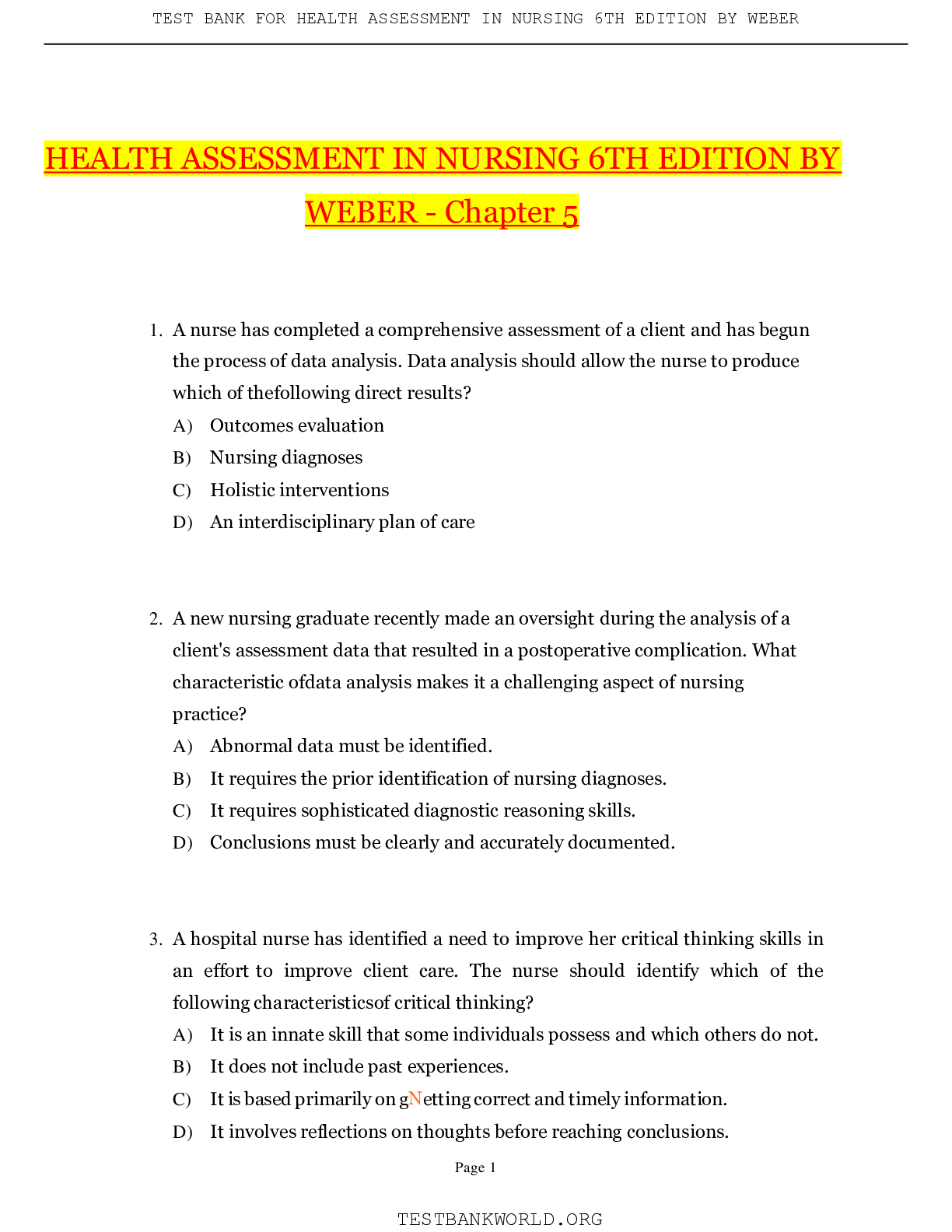*NURSING > EXAM > Test Bank for Understanding Medical-Surgical Nursing 6th Edition Linda S. Williams Paula D. Hopper (All)
Test Bank for Understanding Medical-Surgical Nursing 6th Edition Linda S. Williams Paula D. Hopper
Document Content and Description Below
MULTIPLE CHOICE 1. The nurse is caring for a group of patients on a medical-surgical unit. Which patient should the licensed practical nurse/licensed vocational nurse (LPN/LVN) assess first? 1. A p... atient with a blood glucose of 42 mg/dL 2. A patient who reports a pain level of 2 3. A patient who has just received a diagnosis of cancer 4. A patient who has a respiratory rate of 22 ANS: 1 Chapter: Chapter 1 Critical Thinking and the Nursing Process Objective: 7. Prioritize patient care activities based on the Maslow hierarchy of human needs. Pages: 6–7 Heading: Prioritize Care Integrated Process: Clinical Problem-Solving Process (Nursing Process) Client Need: SECE—Coordinated Care Cognitive Level: Application [Applying] Concept: Patient-Centered Care Difficulty: Difficult Feedback 1 This patient has a dangerously low blood glucose level and requires immediate intervention. 2 This patient will need to be assessed, but is not as high a priority. 3 According to Maslow, psychosocial needs are not as high of a priority as physiological needs. 4 A respiratory rate of 22 is within normal range. PTS: 1 CON: Patient-Centered Care 2. The LPN/LVN enters the room of a patient who is angry and yells, “I asked 5 minutes ago for my pain medication. I’m going to call the CEO of the hospital if you don’t get it for me now.” Which statement by the nurse demonstrates intellectual empathy? 1. “We are short-staffed today, so it will take me longer to meet your needs.” 2. “I am sorry you had to wait, I know you must be in a lot of pain.” 3. “I had another patient who had severe pain, and I had to get to them first.” 4. “I will get you the number for the CEO, but he is aware of how busy we are.” ANS: 2 Chapter: Chapter 1 Critical Thinking and the Nursing Process Objective: 2. Describe attitudes and skills that promote good critical thinking Page: 2 Heading: Intellectual Empathy Integrated Process: Communication and Documentation Client Need: Psychosocial Integrity Cognitive Level: Application [Applying] Concept: Communication Difficulty: Moderate Feedback 1 This statement does not consider an individual’s situation. 2 This statement demonstrates intellectual empathy by considering this patient’s situation and will likely alleviate the patient’s anger. 3 This statement does not consider a patient’s situation and does not demonstrate intellectual empathy. 4 This statement addresses the patient’s statement of wanting to call the CEO, but does not demonstrate intellectual empathy by considering the patient’s situation. PTS: 1 CON: Communication 3. The nurse is collecting data on a patient. Which data are described as subjective? 1. Respiratory rate of 26 per minute 2. Patient report of shortness of breath 3. Coarse lung sounds bilaterally 4. Cough producing green sputum ANS: 2 Chapter: Chapter 1 Critical Thinking and the Nursing Process Objective: 5. Differentiate between objective and subjective data. Page: 4 Heading: Subjective Data Integrated Process: Communication and Documentation Client Need: Communication and Documentation Cognitive Level: Application (Applying) Concept: Communication Difficulty: Moderate Feedback 1 Respiratory rate of 26 per minute is an example of objective data. 2 A patient reporting symptoms to the nurse is an example of subjective data. 3 Coarse lung sounds is an example of objective data. 4 A productive cough is an example of objective data. PTS: 1 CON: Communication 4. A patient with a newly fractured femur reports a pain level of 8/10 and analgesic medication is not due for another 50 minutes. Which action should the nurse take first? 1. Reposition the patient. 2. Give the medication in 30 minutes. 3. Notify the registered nurse (RN) or physician. 4. Tell the patient it is too early for pain medication. ANS: 3 Chapter: Chapter 1 Critical Thinking and the Nursing Process Objective: 4. Identify the role of a licensed practical nurse/licensed vocational nurse in using the nursing process. Page: 3 Heading: Clinical Judgement Integrated Process: Clinical Problem-solving Process (Nursing Process) Client Need: SECE—Coordinated Care Cognitive Level: Application [Applying] Concept: Patient-Centered Care Difficulty: Moderate Feedback 1 The patient who has a fractured femur is having acute pain. Repositioning a patient with a new fracture is not likely to relieve pain. 2 Giving the medication before the prescribed time is beyond the nurse’s scope of practice. 3 The patient should not have to wait for pain relief, so the LPN should inform the RN or physician so new pain relief orders can be obtained. 4 The nurse needs to do more than expect the patient to wait for pain relief. PTS: 1 CON: Patient-Centered Care 5. The nurse is prioritizing care based on Maslow hierarchy of needs. Which need does the nurse identify as having the highest priority? 1. Job-related stress 2. Feeling of loneliness 3. Pain level of 9 on 0-to-10 scale 4. Lack of confidence ANS: 3 Chapter: Chapter 1 Critical Thinking and the Nursing Process Objective: 7. Prioritize patient care activities based on the Maslow hierarchy of human needs Page: 7 Heading: Prioritize Care Integrated Process: Caring Client Need: SECE – Coordinated Care Cognitive Level: Application [Applying] Concept: Patient-Centered Care Difficulty: Moderate Feedback 1 Job-related stress falls under safety according to Maslow and is addressed after physiological needs. 2 According to Maslow, loneliness is addressed under social needs following physiological and safety. 3 Pain is a physiological need and is the highest priority. 4 Lack of confidence falls under esteem according to Maslow and is addressed following physiological, safety, and social needs. PTS: 1 CON: Patient-Centered Care 6. The nurse is planning care and setting goals for a newly admitted patient. Who should the nurse include when conducting these nursing actions? 1. Patient 2. Nurse manager 3. Hospital chaplain 4. Patient’s health care provider (HCP) ANS: 1 Chapter: Chapter 1 Critical Thinking and the Nursing Process Objective: 4. Identify the role of a licensed practical nurse/licensed vocational nurse is using the nursing process. Page: 6 Heading: Prioritize Care Integrated Process: Communication and Documentation Client Need: SECE—Management of Care Cognitive Level: Application [Applying] Concept: Communication Difficulty: Moderate Feedback 1 Planning care and setting goals is an action performed with the patient. The patient must be in agreement with the plan for it to be successful in meeting the desired outcomes. 2 The nurse manager may or may not be aware of the patient’s care needs. 3 The hospital chaplain may not be aware of the patient’s needs. 4 The focus of nursing care is different from that of the HCP. PTS: 1 CO [Show More]
Last updated: 1 year ago
Preview 1 out of 23 pages
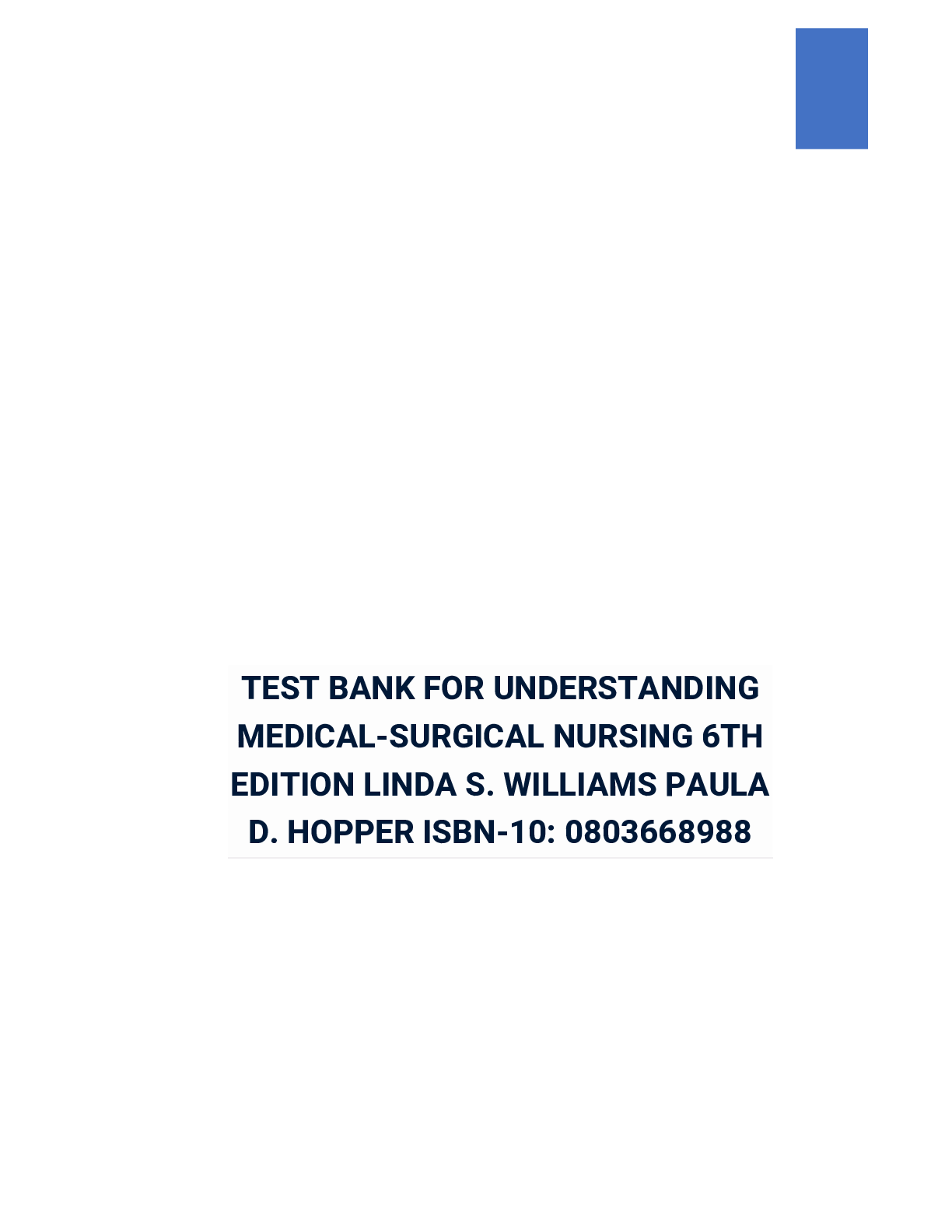
Reviews( 0 )
Document information
Connected school, study & course
About the document
Uploaded On
Jan 29, 2023
Number of pages
23
Written in
Additional information
This document has been written for:
Uploaded
Jan 29, 2023
Downloads
0
Views
61


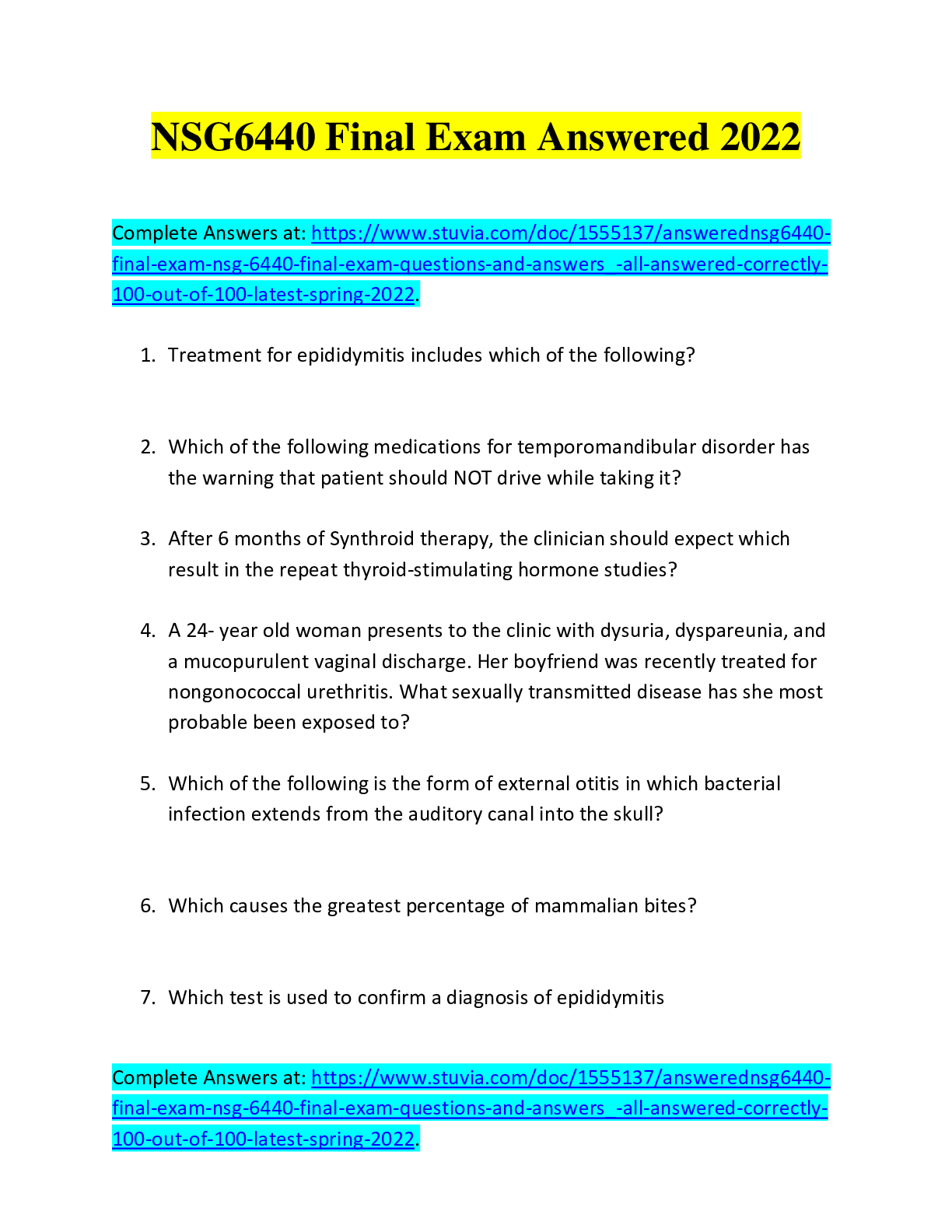



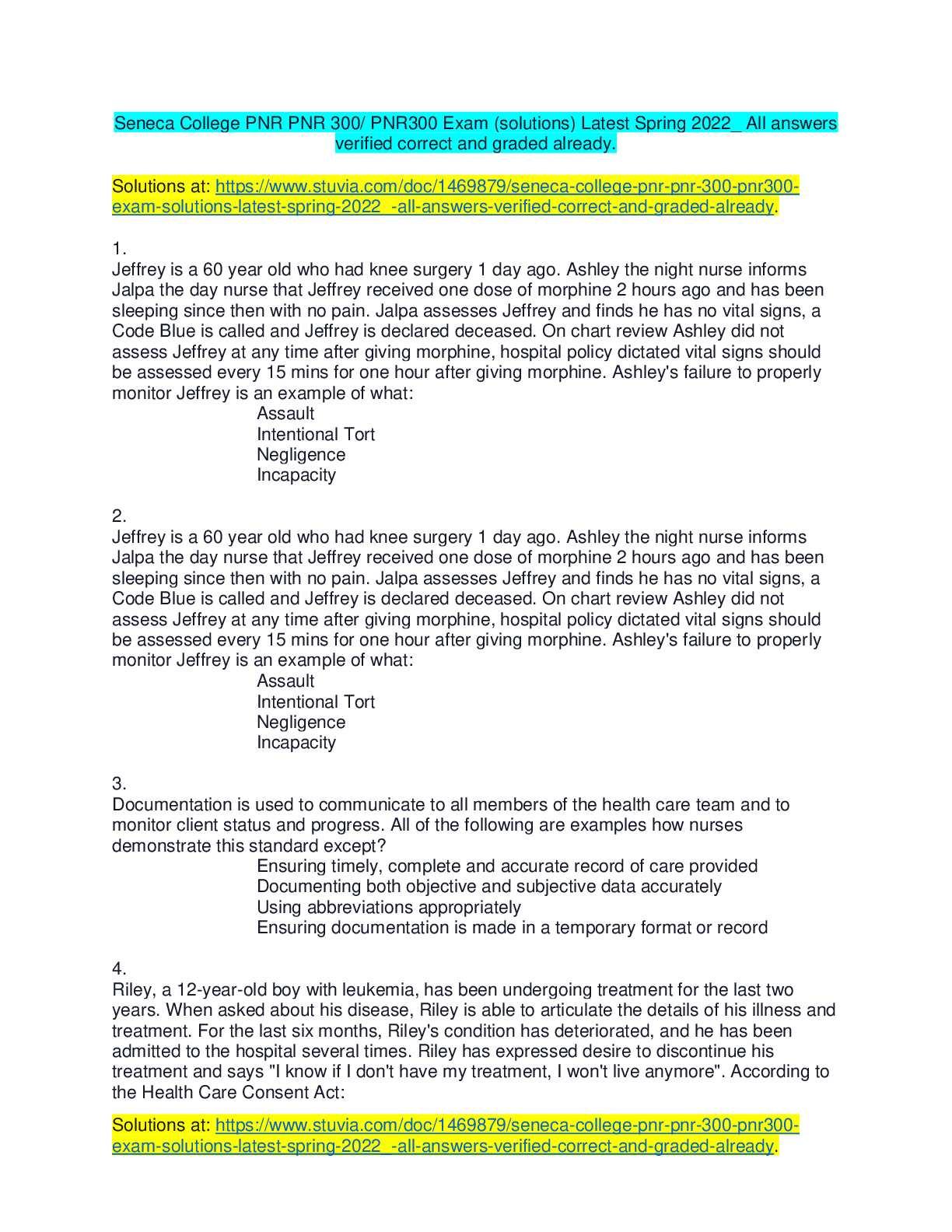

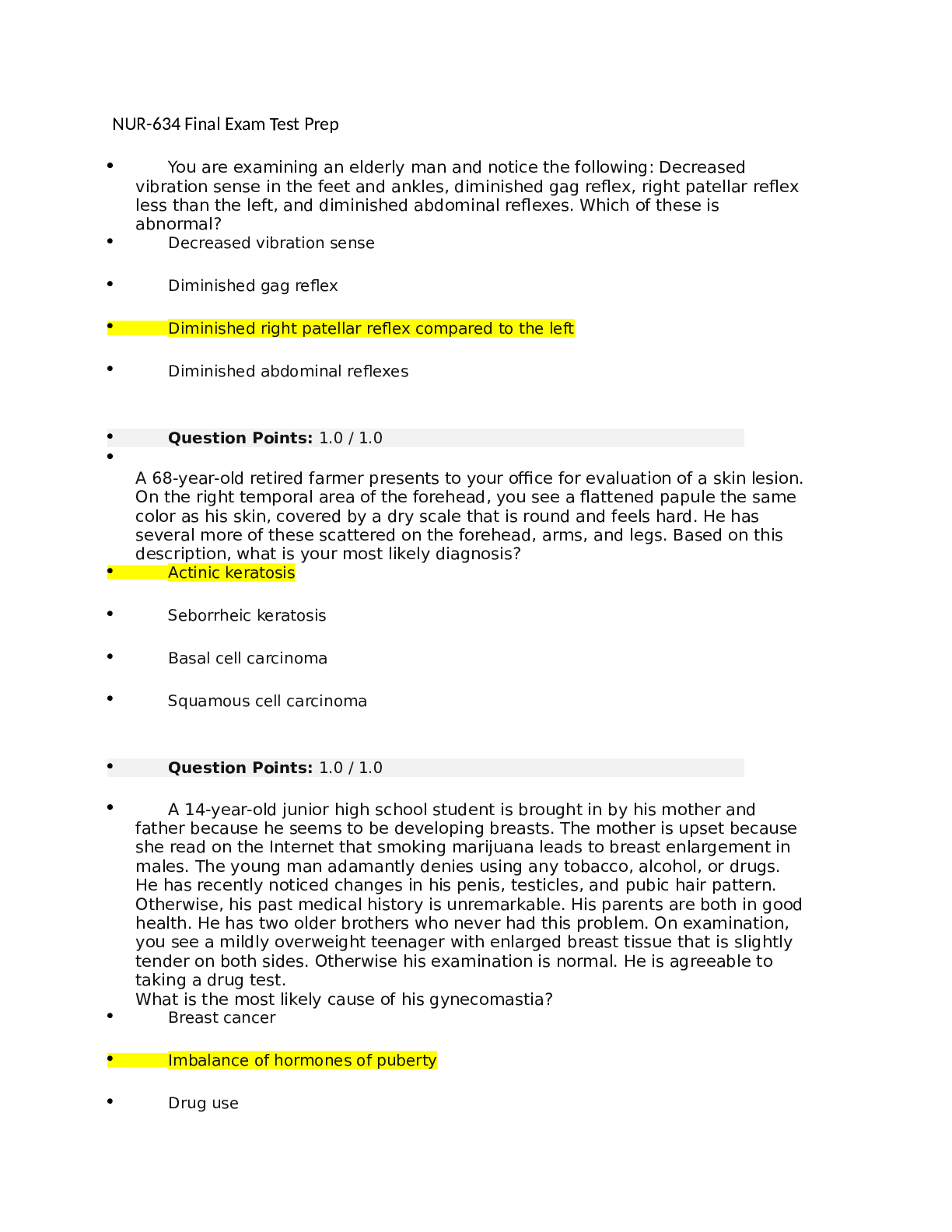


.png)

.png)
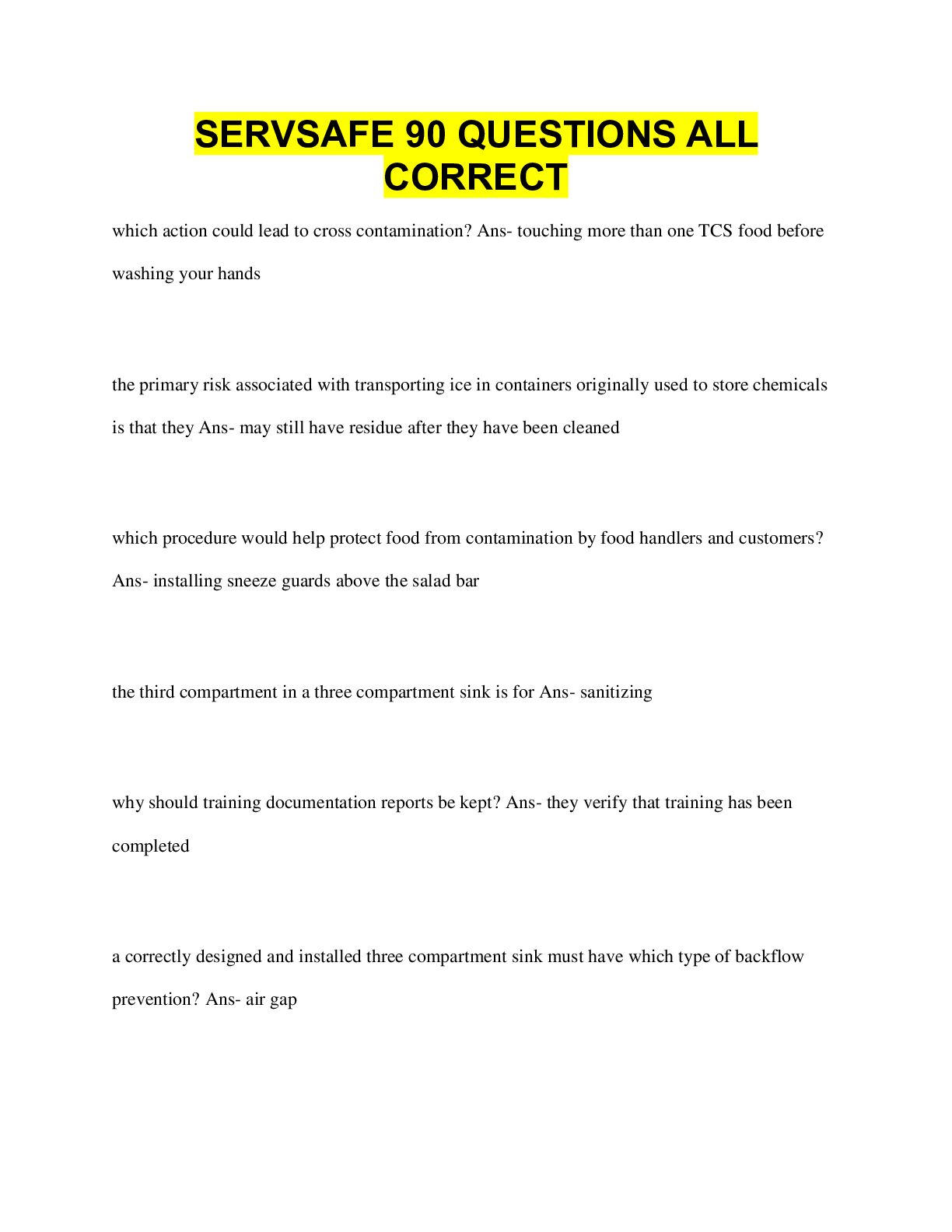
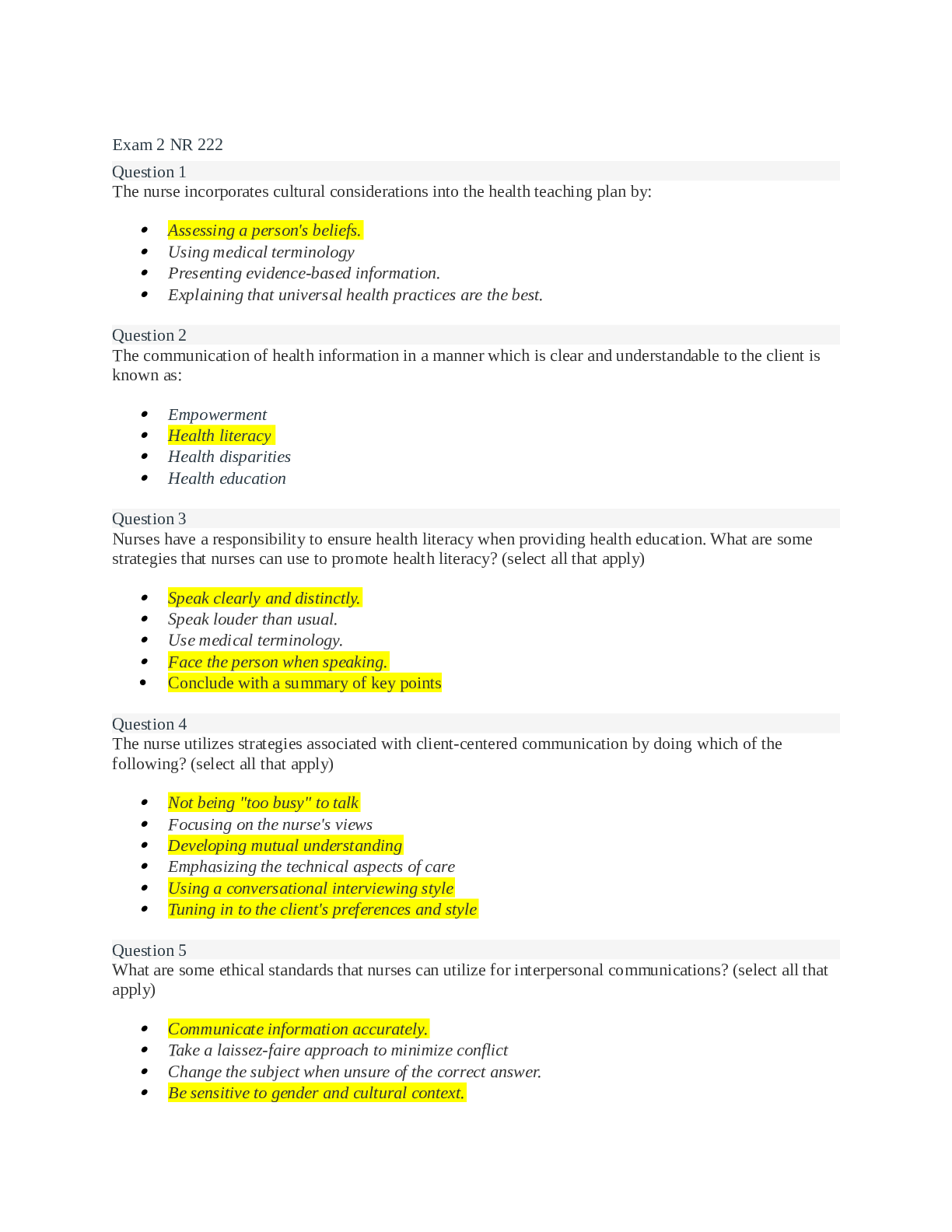
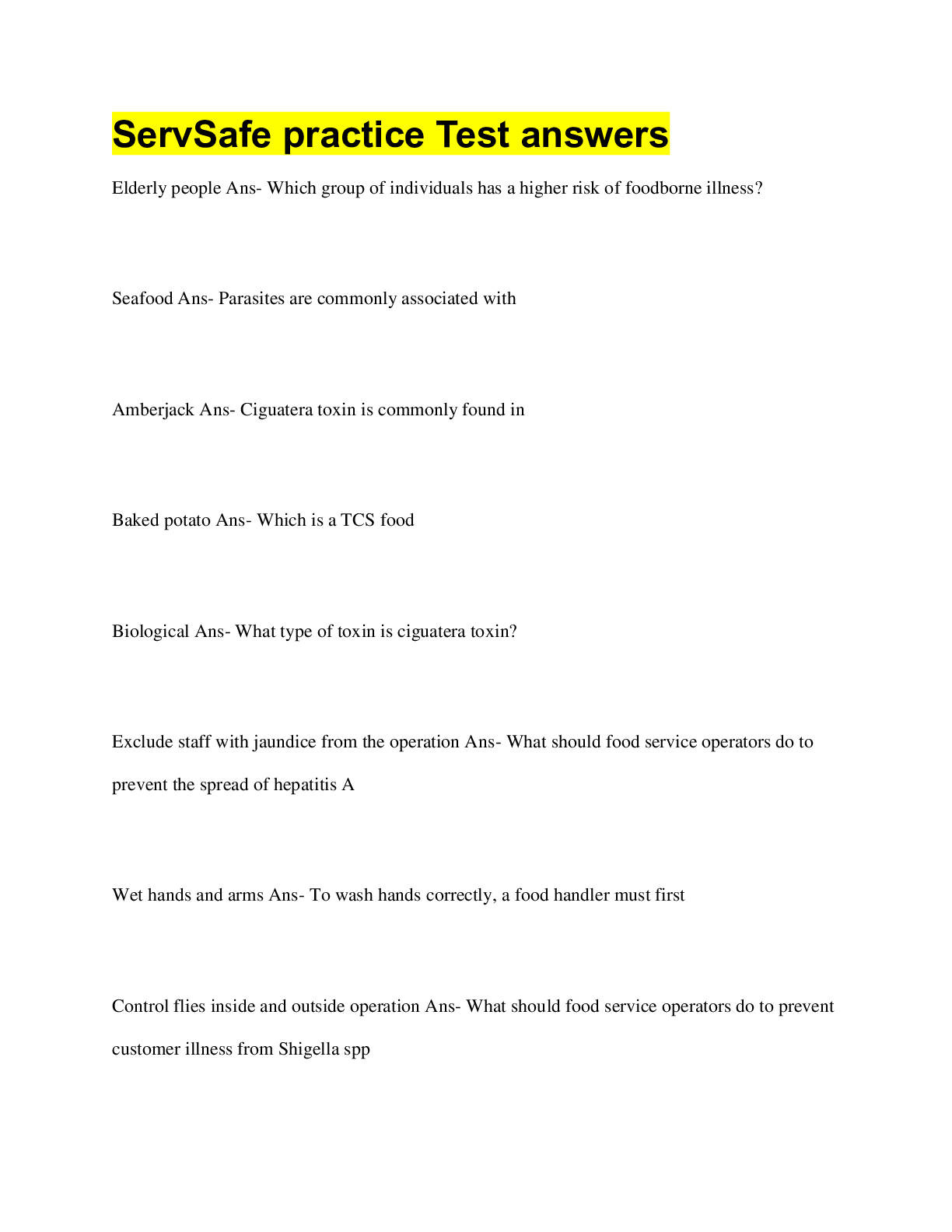
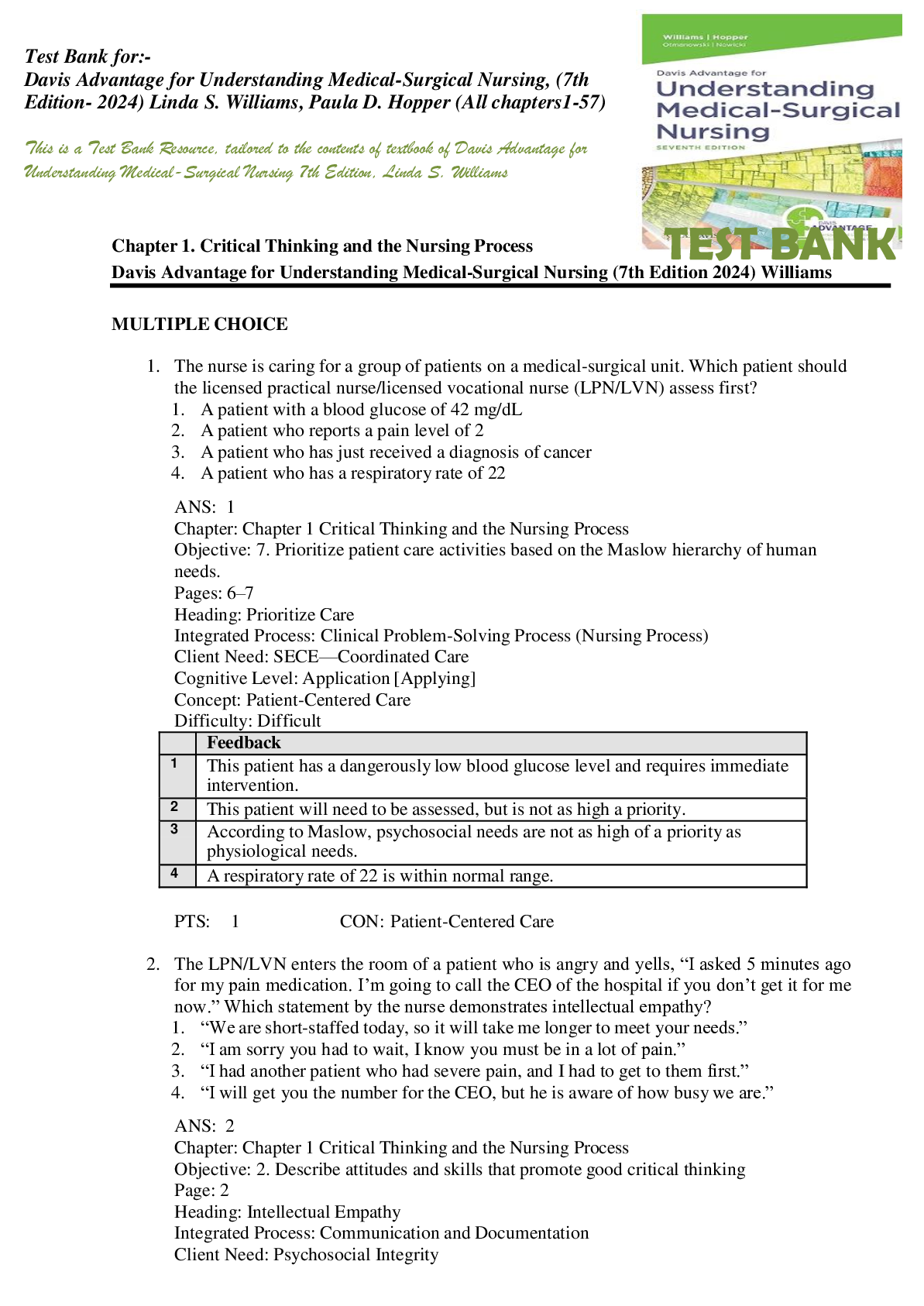
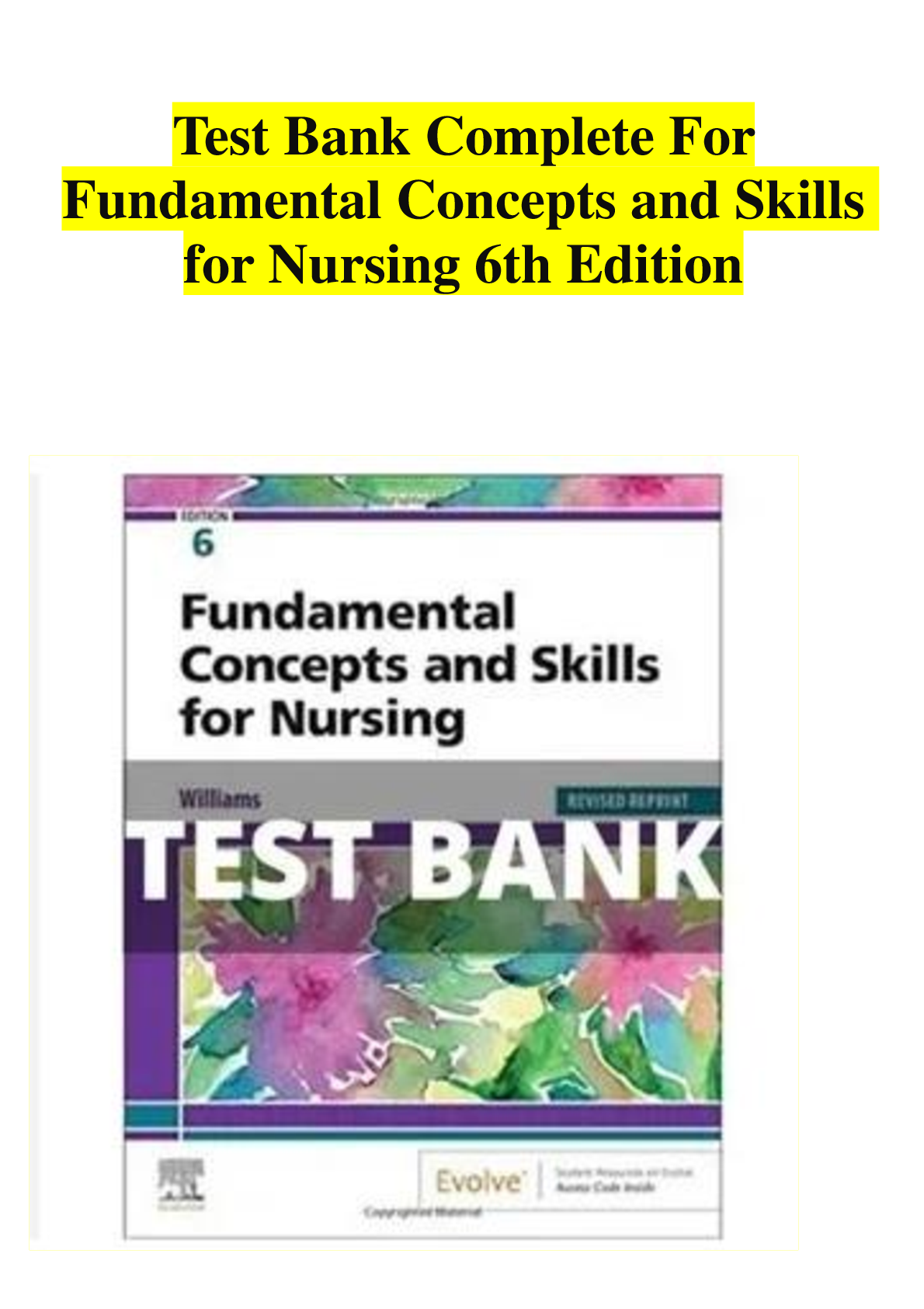
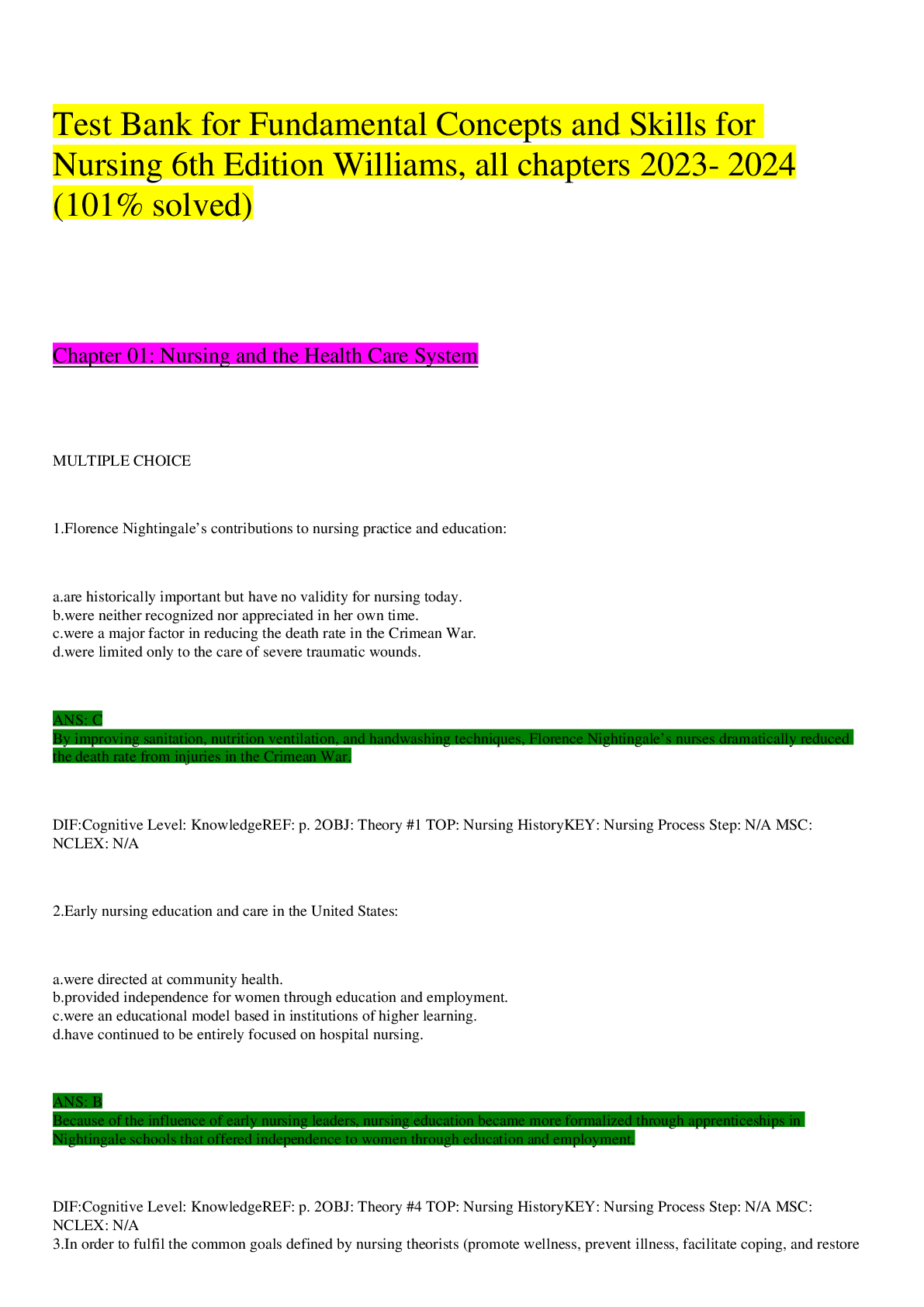
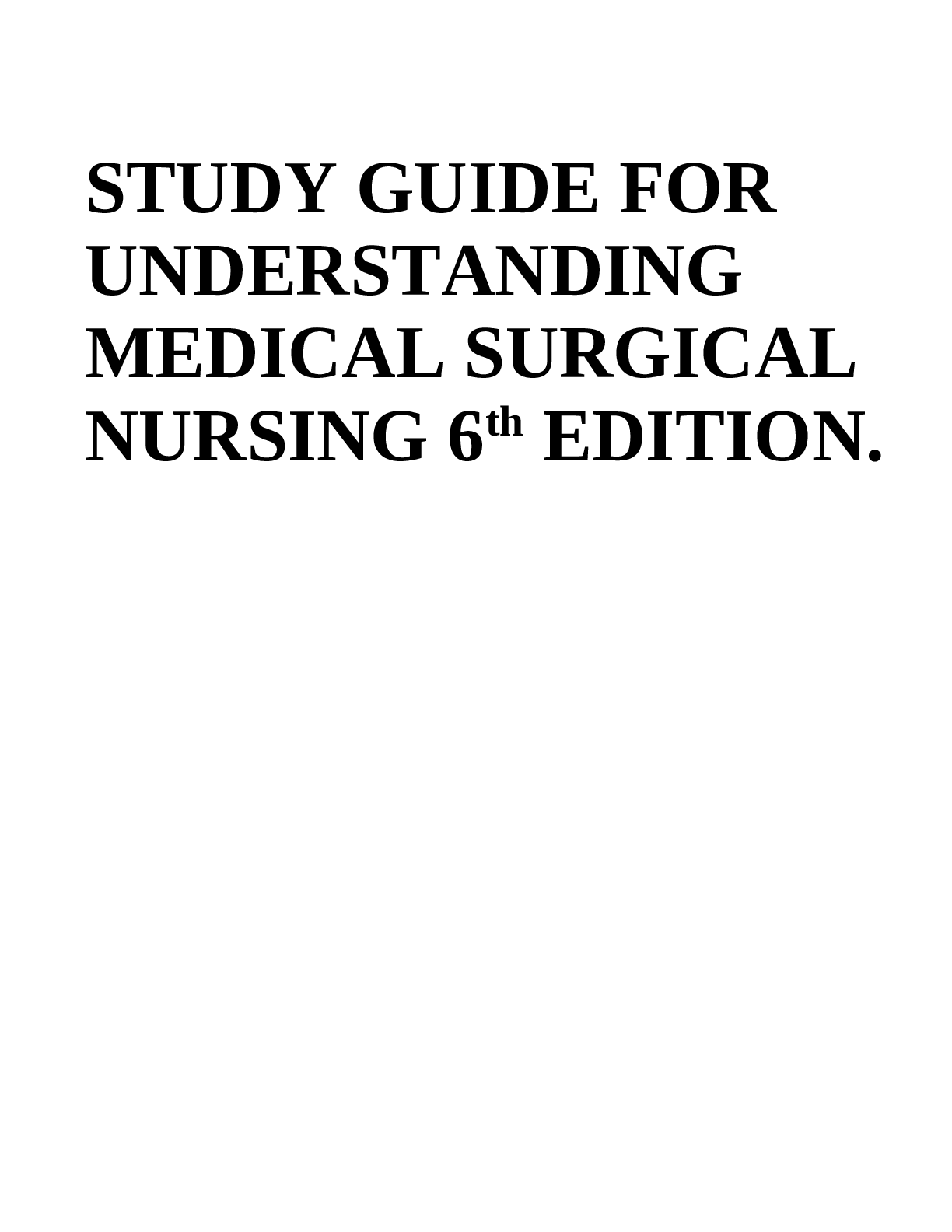
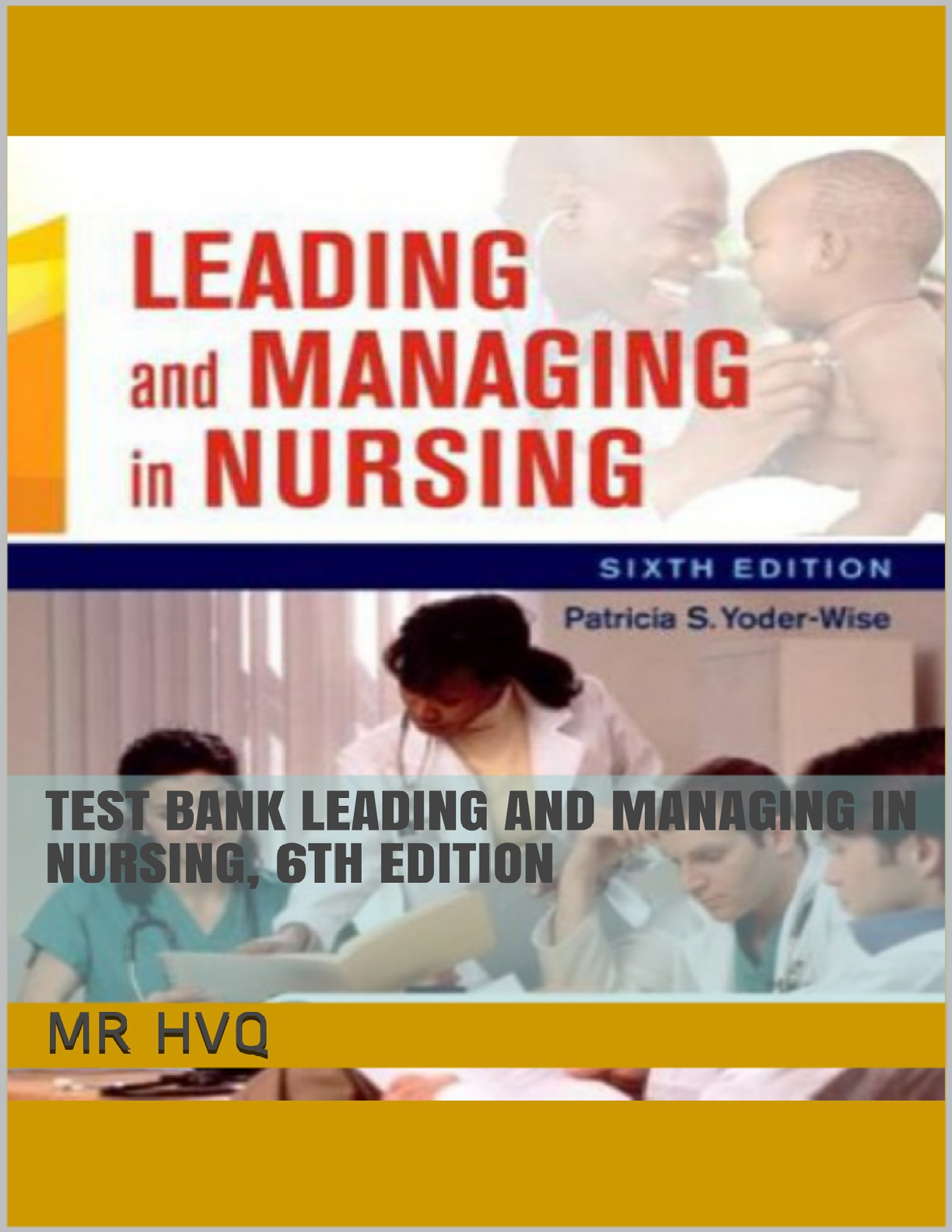

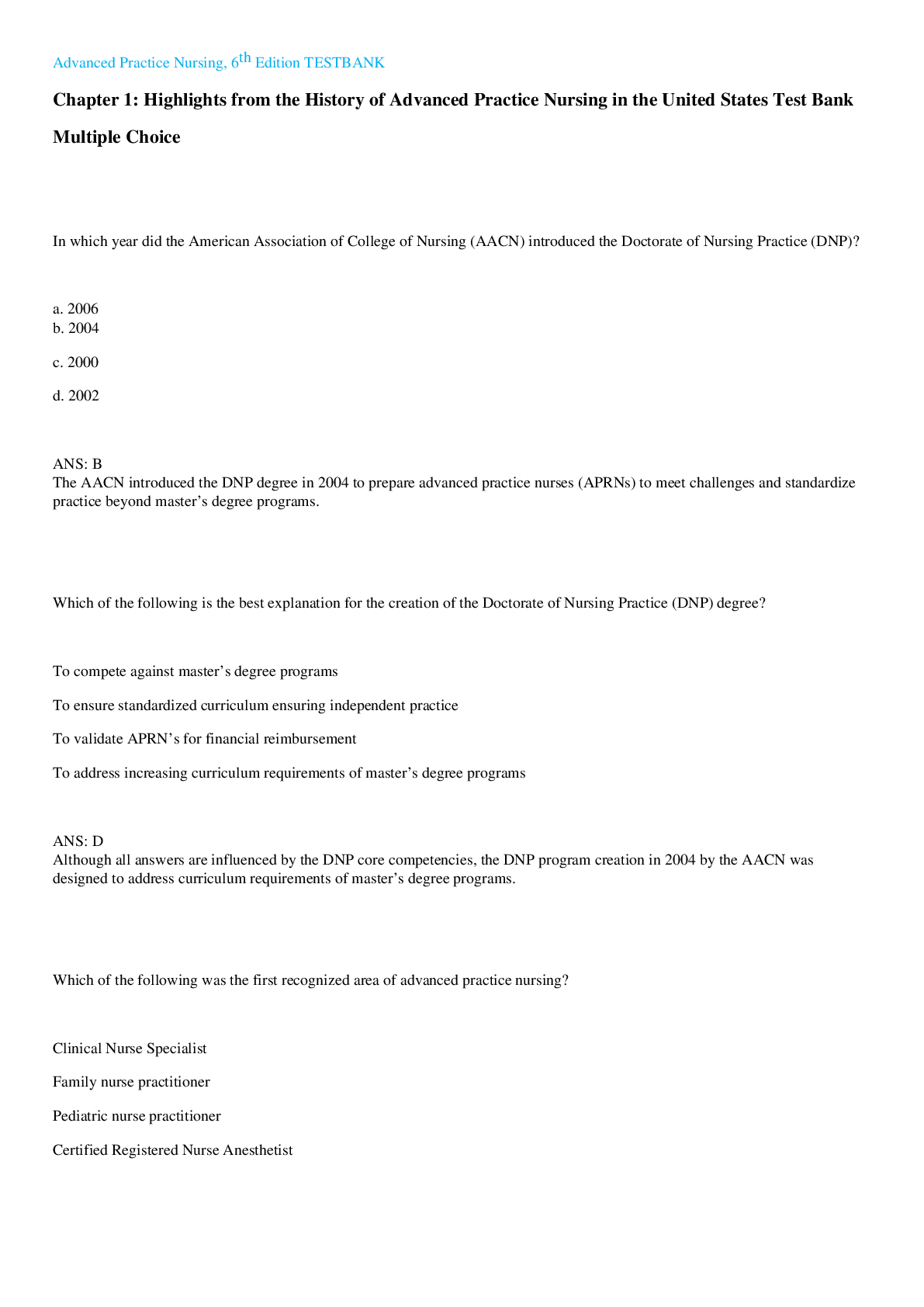

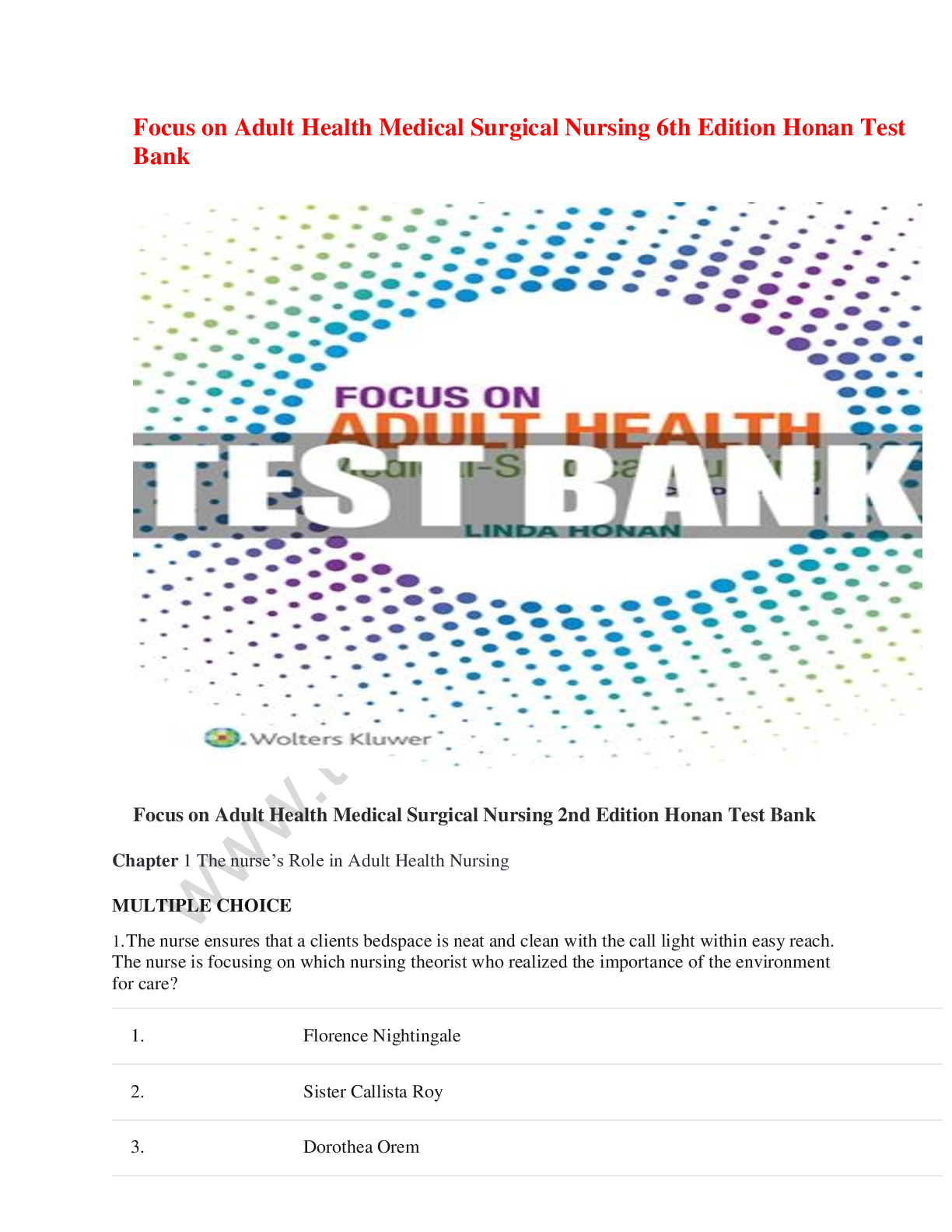
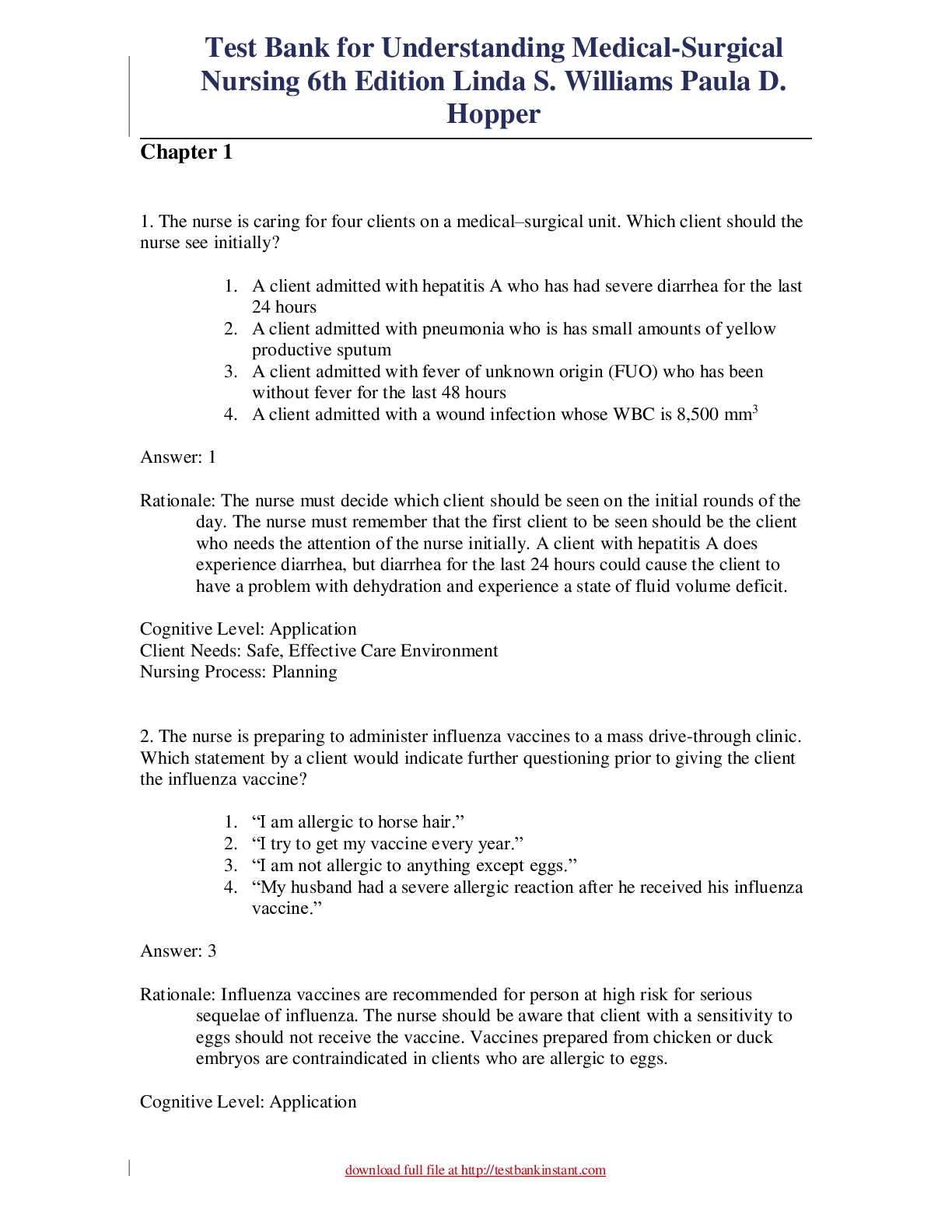

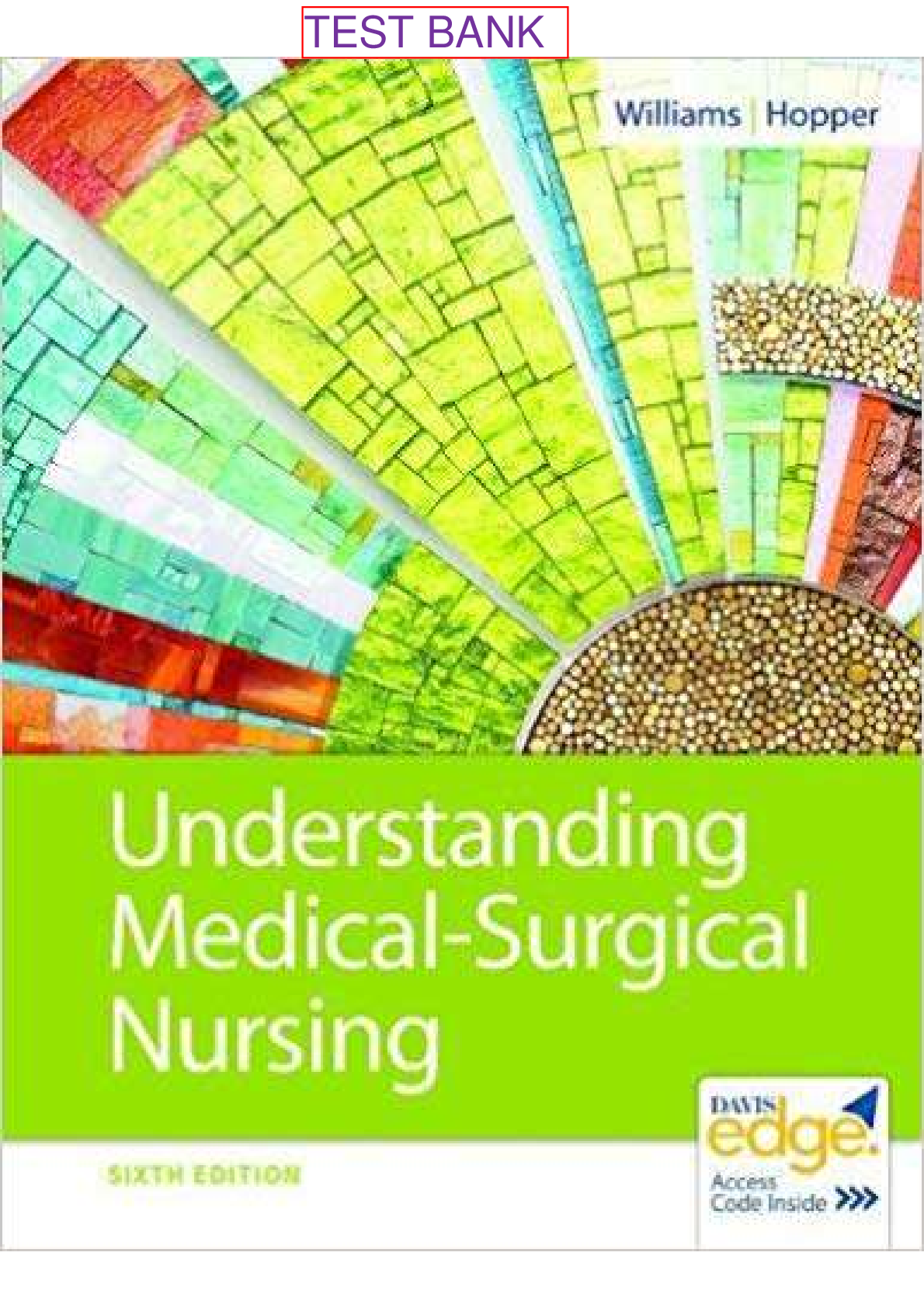
.png)

